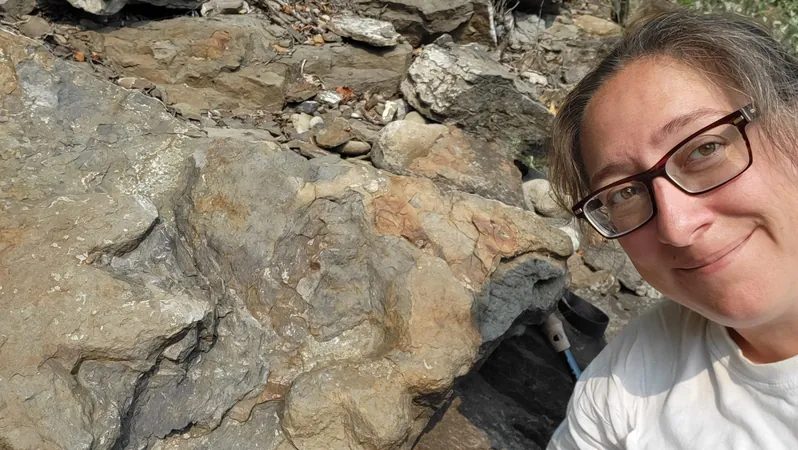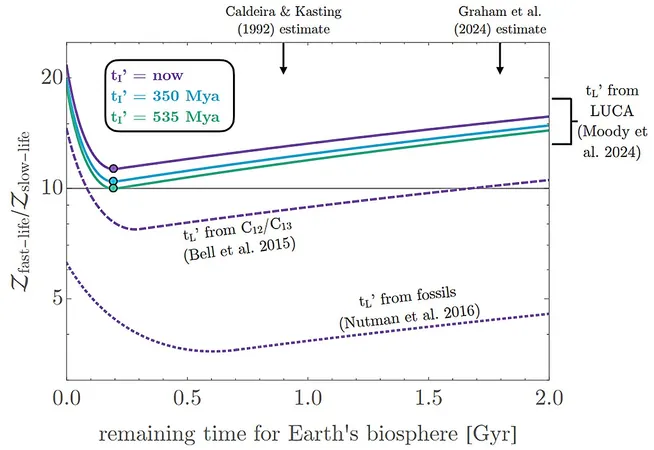
Groundbreaking Discovery: First Ever Three-Toed Ankylosaur Footprints Unearthed in Canada!
2025-04-15
Author: Jacob
A Dinosaur Discovery Like No Other!
In an exciting first, a team led by a researcher from the Royal BC Museum (RBCM) has uncovered fossilized footprints of a three-toed ankylosaur in the stunning Canadian Rockies. These ancient tracks, dating back an astonishing 100 million years, were discovered in Tumbler Ridge, British Columbia, and northwestern Alberta.
Meet the Ruopodosaurus clava!
This remarkable find is not just another dinosaur footprint; researchers have named the species Ruopodosaurus clava, translating to 'the tumbled-down lizard with a club.' This name pays homage to both the mountainous region of the discovery and the characteristic tail club of the ankylosaur.
Distinguishing Three-Toed from Four-Toed!
While four-toed ankylosaurs have been spotted across North America, this discovery marks the first identification of the three-toed variety in the region. Unlike their nodosaurid cousins, which feature flexible tails and four toes, the ankylosaurid boasts a powerful, sledgehammer-like tail club and three distinct toes.
Who Was Ruopodosaurus?
Victoria Arbour, the curator of palaeontology at the RBCM, shared insights about this newfound species. She estimates Ruopodosaurus was about 5-6 meters long, spiky, and armored with a stiff tail or a full tail club. "Ankylosaurs are my favorite group of dinosaurs to work on, so identifying new examples in British Columbia is incredibly thrilling," Arbour exclaimed.
A Collaboration of Experts!
This monumental discovery was a result of collaboration with Charles Helm, a scientific advisor at the Tumbler Ridge Museum. Helm had long observed signs of three-toed ankylosaurs in the area and reached out to Arbour for her expertise. Since the discovery of an ankylosaur trackway by two boys in 2000, the connection between Tumbler Ridge and ankylosaurs has flourished.
Insights into the Cretaceous Era!
These footprints provide vital evidence that ankylosaurids inhabited North America during the Cretaceous period, around 100 to 94 million years ago. Previously, the absence of ankylosaur bones from this era in North America led scientists to question their presence. This groundbreaking research reveals that they did indeed roam this region, highlighting the importance of northeastern BC in understanding dinosaur evolution.
A Treasure Trove for Future Discoveries!
As Arbour notes, the discovery underscores the potential of the Peace Region of northeastern BC for further paleontological breakthroughs. "There’s still so much more to be discovered," she says, igniting hope for the unearthing of more ancient secrets hidden beneath the earth.









 Brasil (PT)
Brasil (PT)
 Canada (EN)
Canada (EN)
 Chile (ES)
Chile (ES)
 Česko (CS)
Česko (CS)
 대한민국 (KO)
대한민국 (KO)
 España (ES)
España (ES)
 France (FR)
France (FR)
 Hong Kong (EN)
Hong Kong (EN)
 Italia (IT)
Italia (IT)
 日本 (JA)
日本 (JA)
 Magyarország (HU)
Magyarország (HU)
 Norge (NO)
Norge (NO)
 Polska (PL)
Polska (PL)
 Schweiz (DE)
Schweiz (DE)
 Singapore (EN)
Singapore (EN)
 Sverige (SV)
Sverige (SV)
 Suomi (FI)
Suomi (FI)
 Türkiye (TR)
Türkiye (TR)
 الإمارات العربية المتحدة (AR)
الإمارات العربية المتحدة (AR)